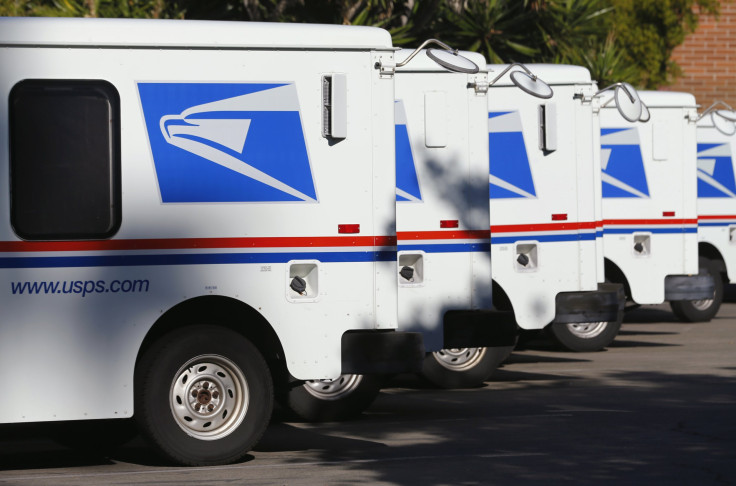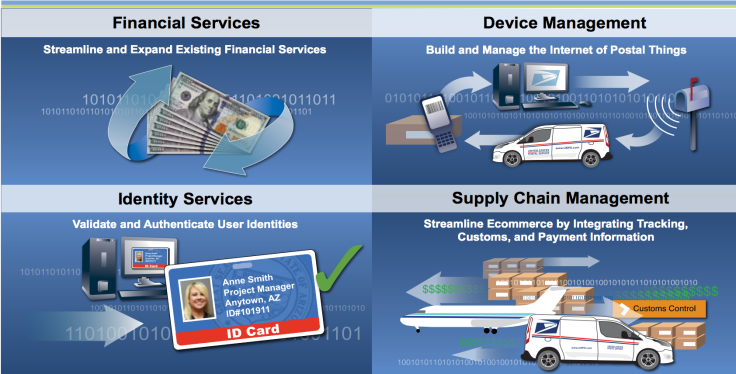US Postal Service Considers Blockchain Uses Including Issuing Its Own Digital Currency ‘Postcoin’

The U.S. Postal Service (USPS) has published a report looking at ways it could use blockchain, the technology that underpins bitcoin, to improve its services with connected supply chains, smart device networks and even its own digital currency.
The report, entitled “Blockchain Technology: Possibilities for the U.S. Postal Service,” was carried out by Swiss Economics, a consulting firm with expertise in blockchain technology. The report concludes: “The Postal Service could benefit from blockchain technology in the short term by studying the technology and possibly experimenting with blockchain-based solutions for financial services.”
The authors of the report say that using blockchain technology could help the postal service in four areas: identity management; supply chain management; device management; and financial services. It is in the area of financial services where blockchain has seen the most interest since it was first deployed as the mechanism for verifying and recording bitcoin transactions.
The blockchain is a decentralized ledger where records of all transactions are held not by a central clearing house (such as a bank or other financial institution) but by each member of the network, therefore removing the need for a trusted third party. That results in faster transactions and lower costs.
According to the report, the USPS could develop its own version of bitcoin, dubbed Postcoin, which would help expand and increase the efficiency of the money exchange service which it already offers. The USPS could choose to join an existing public blockchain or create its own blockchain from scratch, which would have the added benefit of allowing greater control over the service’s features.
The potential for such a new cryptocurrency are global, according to the report. “The flexibility and convenience associated with the Postcoin could potentially allow the expansion of electronic money transfer services to anyone in the world.”

While blockchain developments have so far centered on improving the financial industry, in the last six months there has been a surge of interest from developers in a huge range of other sectors seeking to apply the benefits of the blockchain to their respective industries. Examples include the use of blockchain to track diamond sales, to prove the provenance of art work and to register the sale of property.
The USPS could also expand its use of blockchain beyond financial services, the report says. One of those areas is device management — or the “Internet of Postal Things,” as the report calls it — where everything from mailboxes to mail trucks are connected and can inform the network automatically of their status.
“For example, a vehicle could monitor the performance of its brake pads, determine when one is about to wear out, find out if that part is still under warranty, create a contract with the manufacturer to install a replacement part, and then pay for the brake pad and service — all autonomously,” the report says.
This type of predictive maintenance has been shown to lead to big cost savings in other industries, and Swiss Economics says employing it could save the USPS 7 percent of current fleet costs.
Another area in which blockchain technology could be deployed is in identity management, with each person’s identity stored on a blockchain. This service would tie in with other services already offered by the USPS on behalf of others, such as passport applications, which it carries out on behalf of the State Department.

Finally, the report suggests exploring the possibility of using blockchain technology to make it easier to establish where every piece of mail has been. “Imagine if each mailpiece was embedded with a sensor that could keep track of its own chain of custody while executing smart contracts for payment and customs clearance,” the report says. Not only would this improve cost efficiency and help cut delivery times, it would also create “an auditable chain of custody” to aid dispute resolution.
This is something that is already being tested using one of the most prominent public blockchains, Ethereum, and could be first implemented on high-value shipments which, if proven popular, could be expanded to the rest of the service.
© Copyright IBTimes 2024. All rights reserved.






















